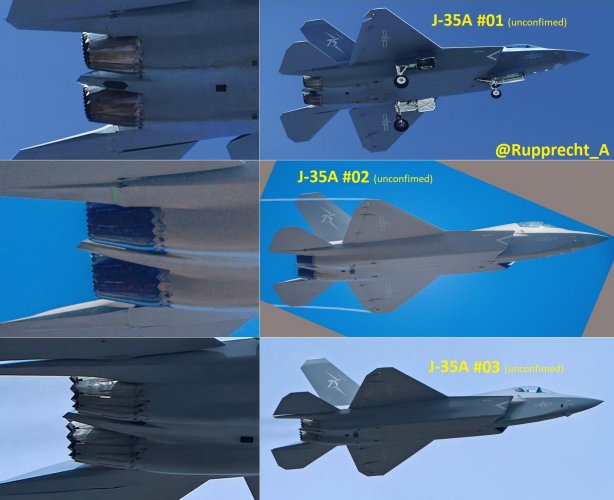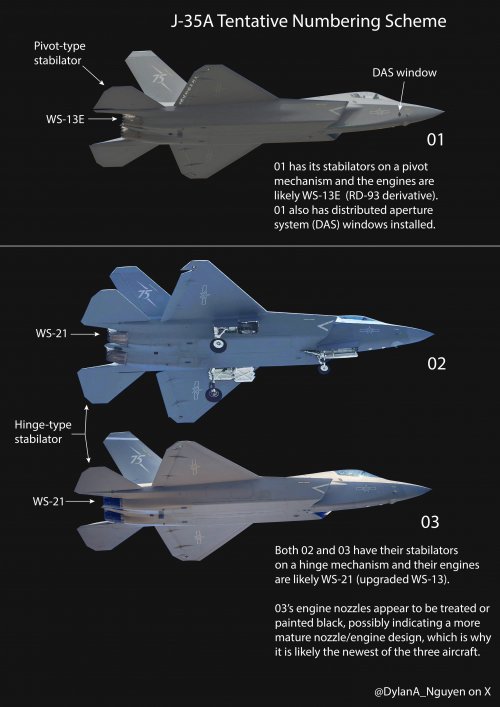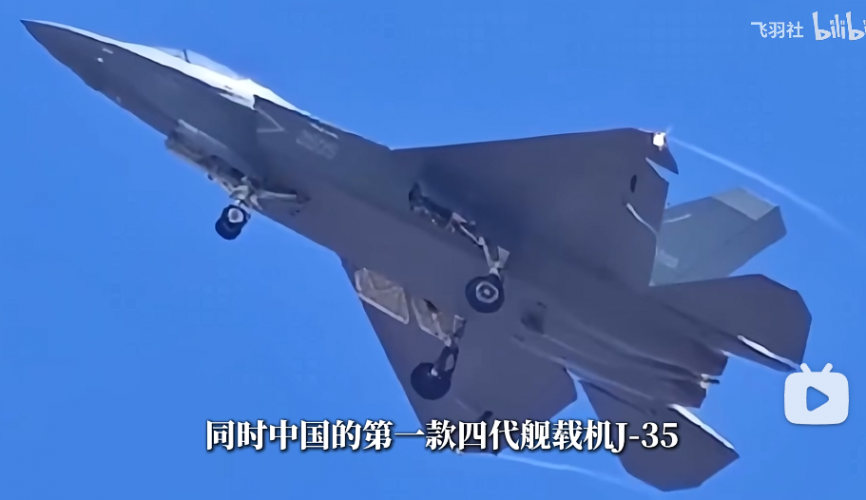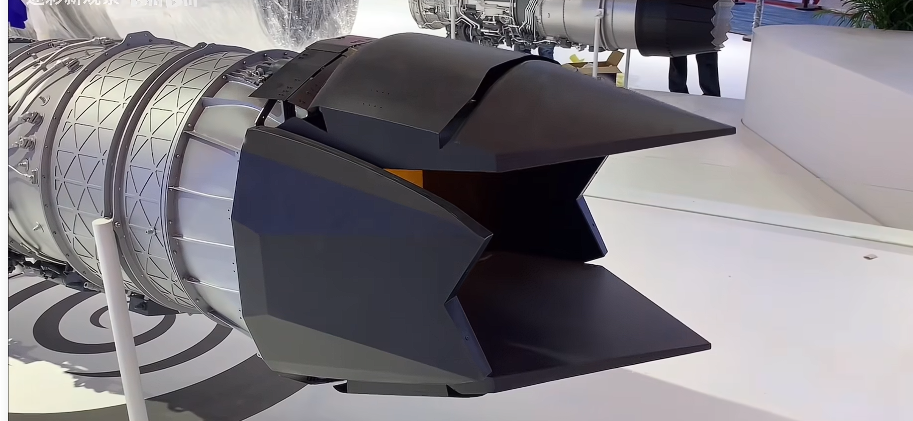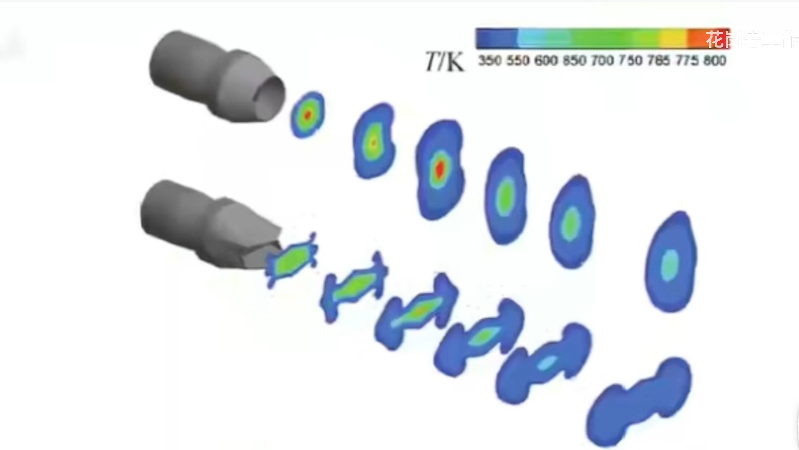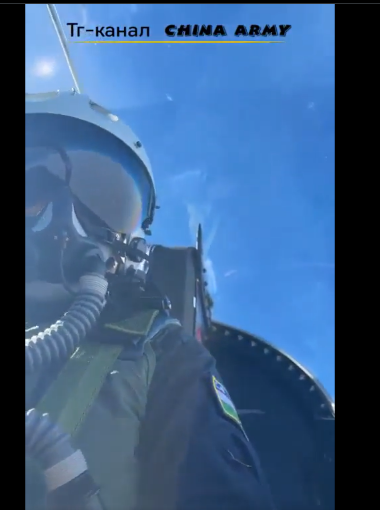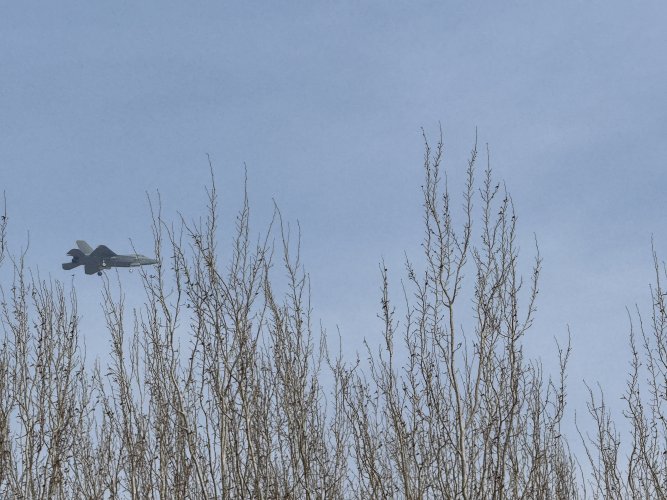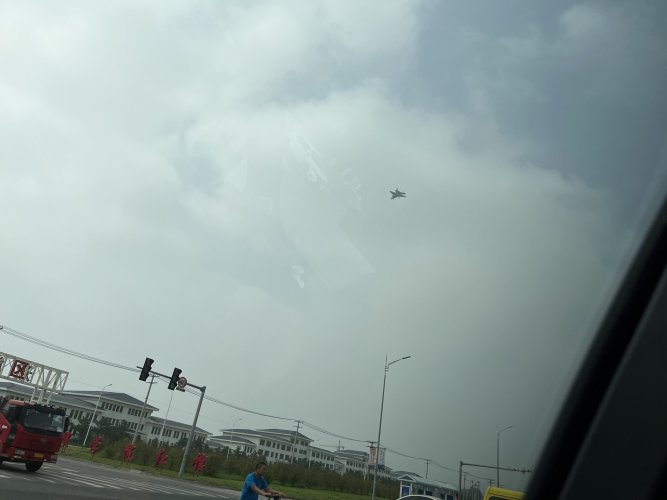You are using an out of date browser. It may not display this or other websites correctly.
You should upgrade or use an alternative browser.
You should upgrade or use an alternative browser.
Shenyang FC-31 demonstrators / J-35 naval fighter / J-35A land-based version
- Thread starter Foxglove
- Start date
- Joined
- 2 January 2006
- Messages
- 3,825
- Reaction score
- 5,125
alberchico
I really should change my personal text
- Joined
- 14 January 2014
- Messages
- 706
- Reaction score
- 1,512
- Joined
- 2 January 2006
- Messages
- 3,825
- Reaction score
- 5,125
Even if he claims it to be in service, IMO it is highly unlikely to be in service within the ETC yet, I think the ETC-Weibo account just „recycled“ some old J-35A footage from Zhuhai. IMO it is clearly a prototype and also, I expect again a unit within the FTTB like the 176th or 172nd to get them first.
SUPER=BUG
ACCESS: Secret
- Joined
- 25 September 2024
- Messages
- 209
- Reaction score
- 334
It appears that currently there are only two codenames: FC31 and J35. J35 is a significant improvement based on the FC31, while the foreign trade version corresponds to the FC31, or rather, it is designed according to the specific requirements of clients starting from the FC31 model.
According to the vertial and horizontal stabilizers, it is the model of FC-31 1.0.Some interesting modelsView attachment 765685View attachment 765686
FighterJock
ACCESS: Above Top Secret
- Joined
- 29 October 2007
- Messages
- 5,599
- Reaction score
- 5,929
Nice find SUPER=BUG, does that mean that all future PLAAF/PLAN fighters will have the two dimensional thrust vectoring nozzles fitter as standard or being retrofitted with them?
SUPER=BUG
ACCESS: Secret
- Joined
- 25 September 2024
- Messages
- 209
- Reaction score
- 334
Oh, friend. This type of nozzle will make a slight difference in performance, the binary vector engine has almost 10% thrust loss, but the airflow close to the rectangular nozzle is easier to dissipate heat and will be better in terms of stealth. If China's engines are strong enough in the future, I think it's possible.Nice find SUPER=BUG, does that mean that all future PLAAF/PLAN fighters will have the two dimensional thrust vectoring nozzles fitter as standard or being retrofitted with them?
Attachments
FighterJock
ACCESS: Above Top Secret
- Joined
- 29 October 2007
- Messages
- 5,599
- Reaction score
- 5,929
Thanks SUPER=BUG, and also thanks for posting the diagram that explains the difference between the two vectoring nozzles that has been annoying me for quite some time.
SUPER=BUG
ACCESS: Secret
- Joined
- 25 September 2024
- Messages
- 209
- Reaction score
- 334
You're welcome, it's my pleasure to answer some of my friends' questionsThanks SUPER=BUG, and also thanks for posting the diagram that explains the difference between the two vectoring nozzles that has been annoying me for quite some time.
- Joined
- 15 January 2021
- Messages
- 396
- Reaction score
- 1,455
10% loss is what the Russians have claimed with their crude initial attempts at a flat vectoring nozzle design. Those losses are not inherent to the configuration, but are a design challenge to overcome. The F-22/F119 nozzle losses are significantly less than the Russian experience.Oh, friend. This type of nozzle will make a slight difference in performance, the binary vector engine has almost 10% thrust loss, but the airflow close to the rectangular nozzle is easier to dissipate heat and will be better in terms of stealth. If China's engines are strong enough in the future, I think it's possible.
I remember reading (here?) that the flat nozzle can help with drag by optimizing the airflow separation, and reducing the wake turbulence, does this sound plausible to you?10% loss is what the Russians have claimed with their crude initial attempts at a flat vectoring nozzle design. Those losses are not inherent to the configuration, but are a design challenge to overcome. The F-22/F119 nozzle losses are significantly less than the Russian experience.
- Joined
- 15 January 2021
- Messages
- 396
- Reaction score
- 1,455
Absolutely! The reason that the external flaps (I.e. turkey feathers) were removed from the USAF F-15s is the the turbulent flow around two closely spaced round nozzles (and the 4 tail surfaces) was any extremely challenging environment, and it cost a lot of maintenance and spare parts to keep replacing them. The square nozzles integrate much more smoothly in that closely spaced environment, reducing drag and improving signature.
FYI - the composite black turkey feathers on the F100-229 were designed to live in the F-15 aft end environment. The USAF decided to leave them off for cost and commonality with the earlier -100/-220 powered F-15.
FYI - the composite black turkey feathers on the F100-229 were designed to live in the F-15 aft end environment. The USAF decided to leave them off for cost and commonality with the earlier -100/-220 powered F-15.
SUPER=BUG
ACCESS: Secret
- Joined
- 25 September 2024
- Messages
- 209
- Reaction score
- 334
Just an example, in fact, no one can know what the Chinese version is. But China did explore in this area.10% loss is what the Russians have claimed with their crude initial attempts at a flat vectoring nozzle design. Those losses are not inherent to the configuration, but are a design challenge to overcome. The F-22/F119 nozzle losses are significantly less than the Russian experience.
SUPER=BUG
ACCESS: Secret
- Joined
- 25 September 2024
- Messages
- 209
- Reaction score
- 334
It is obvious that this is a Chinese aircraft. But this is not a J35, although the display shows a twin-engine fighter, but judging by the cockpit layout, this is more likely to be an L10 or L15 trainer.One Uzbek pilot recorded a video of him flying the J-35A. I can't confirm, if this video really shows the J-35A cockpit.
It might be a (with MFD upgraded) cockpit of another Chinese fighter jet, since the Usbek government is interested in buying Chinese fighter jets.
View: https://x.com/OSINTWarfare/status/1909255263850279167?t=X9IN7hH00-KMr6LUwycKlA&s=19
Dear members and mods like @Deino , if this post is false, please let me know and I will delete it from this topic.
Life of Tyo
ACCESS: Confidential
- Joined
- 23 January 2022
- Messages
- 71
- Reaction score
- 231
One Uzbek pilot recorded a video of him flying the J-35A. I can't confirm, if this video really shows the J-35A cockpit.
It might be a (with MFD upgraded) cockpit of another Chinese fighter jet, since the Usbek government is interested in buying Chinese fighter jets.
View: https://x.com/OSINTWarfare/status/1909255263850279167?t=X9IN7hH00-KMr6LUwycKlA&s=19
Dear members and mods like @Deino , if this post is false, please let me know and I will delete it from this topic.
Another says that JL-10
View: https://www.facebook.com/100058473764407/videos/4145862345647643/?app=fbl
- Joined
- 2 January 2006
- Messages
- 3,825
- Reaction score
- 5,125
It is obvious that this is a Chinese aircraft. But this is not a J35, although the display shows a twin-engine fighter, but judging by the cockpit layout, this is more likely to be an L10 or L15 trainer.
Indeed, the J-35 for Usbekistan is as likely as Germany bring launch-Customer for the F-47
FighterJock
ACCESS: Above Top Secret
- Joined
- 29 October 2007
- Messages
- 5,599
- Reaction score
- 5,929
The J-35 would be highly unlikely for Uzbekistan as they would not have the nessesary experience to operate the it, let alone repair and maintain the stealth coating.
- Joined
- 29 November 2010
- Messages
- 1,773
- Reaction score
- 3,475
snne
ACCESS: Top Secret
- Joined
- 3 July 2022
- Messages
- 1,388
- Reaction score
- 4,509
That is the explosive cord. It's quite common on LIFT trainers and fighter aircraft.if you look closely at the video, there's a long "bar" on the canopy..
View attachment 765982
making me think it is likely a JF-17 and not a J-35. I also think the J-10 has one too.

Currently the Uzbek air force operates the MiG-29s and updated Su-25s. They seem to have retired their Su-27s
This is the cockpit of the JF-17 (AFAIA everything in the cockpit was left untouched in Block 3 except for the HUD and the HMDC) and the one in the video obviously does not match its details at all.
And this is the simulator of the JL-10/L-15:

...Convinced you yet?
- Joined
- 29 November 2010
- Messages
- 1,773
- Reaction score
- 3,475
the cockpit of the JL-10 looks like this
View: https://x.com/rupprechtdeino/status/1174311565790732293
unless what you are showing me is another variant
View: https://x.com/rupprechtdeino/status/1174311565790732293
unless what you are showing me is another variant
snne
ACCESS: Top Secret
- Joined
- 3 July 2022
- Messages
- 1,388
- Reaction score
- 4,509
I've spent half an hour in the "Trainer aircraft tread" on SDF to find the relevant cockpit photo. It seems lile the cockpit has gone through two redesigns already.the cockpit of the JL-10 looks like this
View: https://x.com/rupprechtdeino/status/1174311565790732293
unless what you are showing me is another variant
Post in thread 'Chinese Trainer Aircraft (JL-8, JL-9, JL-10 (L-15), etc.)
Here's another look:
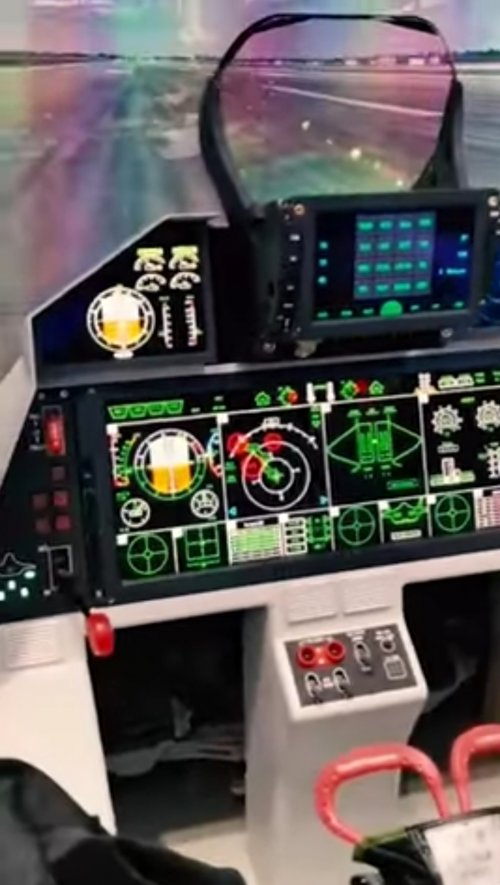
Whereas this is the old layout:
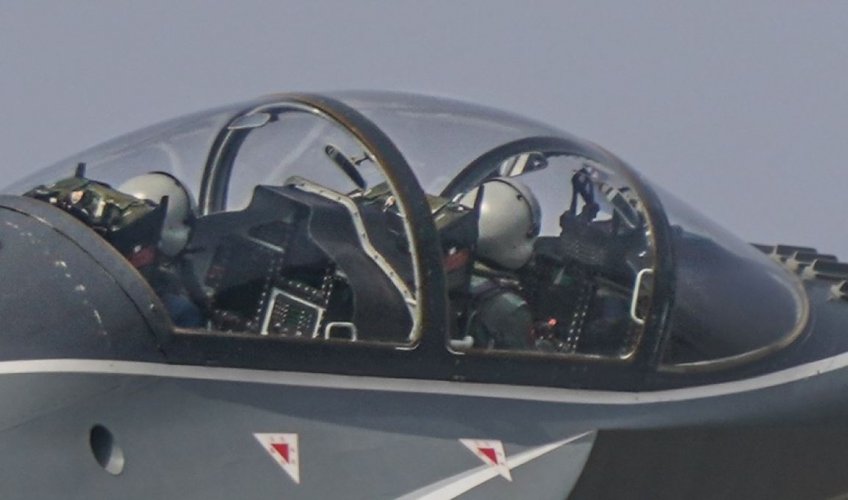
- Joined
- 29 November 2010
- Messages
- 1,773
- Reaction score
- 3,475
I've spent half an hour in the "Trainer aircraft tread" on SDF to find the relevant cockpit photo. It seems lile the cockpit has gone through two redesigns already.
Post in thread 'Chinese Trainer Aircraft (JL-8, JL-9, JL-10 (L-15), etc.)
Here's another look:
View attachment 765987
what you posted looks like the J-35 simulator
note the two bay pics on the screen.
another view of the J-35 simulator can be seen here
J-35 carrier fighter (PLAN) thread
Just because it is a generic looking "modern fighter" cockpit that isn't J-20, doesn't necessarily mean it's for J-35/XY. We've seen multiple such cockpit renditions at Zhuhai and other tradeshows before, as just general technology displays. It doesn't necessarily mean they are the actual...
www.sinodefenceforum.com
snne
ACCESS: Top Secret
- Joined
- 3 July 2022
- Messages
- 1,388
- Reaction score
- 4,509
I'm assuming this is what you're trying to show me?what you posted looks like the J-35 simulator
note the two bay pics on the screen.
another view of the J-35 simulator can be seen here
J-35 carrier fighter (PLAN) thread
Just because it is a generic looking "modern fighter" cockpit that isn't J-20, doesn't necessarily mean it's for J-35/XY. We've seen multiple such cockpit renditions at Zhuhai and other tradeshows before, as just general technology displays. It doesn't necessarily mean they are the actual...www.sinodefenceforum.com
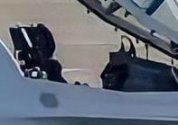
- Joined
- 29 November 2010
- Messages
- 1,773
- Reaction score
- 3,475
No, you probably can't see it as you need to log on, but here's a youtube video showing the same thing.
Its not a simulator for a trainer jet, its one for the J-35 or FC-31.
the displays do look similar to the one in that Uzbek video, but the buttons by the HUD are slightly different?
On the earlier comment on whether Uzbekistan can handle the J-35..
I don't know how demanding the aircraft is maintenance wise..
but Uzbekistan has moderate air force that's been updating. They recently received a number of planes from the old Afghan AF. For a time they used to build/maintain Ilyushin aircraft as well at their Tashkent plant, before switching over to non-aviation industries.
Economically, the country has an HDI level at the same level as Egypt and Vietnam. I don't think a small number of J-35s is unreasonable.. but I've felt that they might be more interested in Kaan.
snne
ACCESS: Top Secret
- Joined
- 3 July 2022
- Messages
- 1,388
- Reaction score
- 4,509
I am a member there, but I haven't had the time to log in today. It might also be due to the crappy internet I've been having lately...No, you probably can't see it as you need to log on
I don't think Uzbekistan has the capacity to field anything beyond a modern MiG-21, and even that would be pushing it. Maybe, if I can find some time, I'll write a more comprehensive explanation as to why.
SspewixzzZ
ACCESS: Restricted
- Joined
- 29 March 2025
- Messages
- 16
- Reaction score
- 32
Guys I've found a new pic of J35A… But I have to make sure it is legal as I am right in China  It has no '75' mark on its tail, so I think this is another new one.
It has no '75' mark on its tail, so I think this is another new one.
snne
ACCESS: Top Secret
- Joined
- 3 July 2022
- Messages
- 1,388
- Reaction score
- 4,509
Have you ever thought about the possibility that it might actually be PS'ed?Guys I've found a new pic of J35A… But I have to make sure it is legal as I am right in ChinaIt has no '75' mark on its tail, so I think this is another new one.
SspewixzzZ
ACCESS: Restricted
- Joined
- 29 March 2025
- Messages
- 16
- Reaction score
- 32
One of J50 videos yesterday was shoted by this guy, and he claimed to try that again today, so I think it's very likely to be realHave you ever thought about the possibility that it might actually be PS'ed?
I checked that just now and it is not deleted yet, so I think it is legal. Here it is :
Sourse : https://www.bilibili.com/video/BV1XHdJYREP2/ (In the comment section)
Attachments
- Joined
- 2 January 2006
- Messages
- 3,825
- Reaction score
- 5,125
One of J50 videos yesterday was shoted by this guy, and he claimed to try that again today, so I think it's very likely to be real
I checked that just now and it is not deleted yet, so I think it is legal. Here it is :
Sourse : https://www.bilibili.com/video/BV1XHdJYREP2/ (In the comment section)
Indeed a J-35A, but I'm not sure if a new aircraft or one of those already known.
PS: Based on the fact, that it has the pivot-style horizontal tail mechanism it should be an early (the first ?) prototype.

Kommoe
ACCESS: Restricted
- Joined
- 3 January 2025
- Messages
- 10
- Reaction score
- 19
accroding to the application of 2D tvc nozzles on the next gen shenyang fighter,the model could be very likely to be of reference valueSome interesting modelsView attachment 765685View attachment 765686

China completes first electromagnetic catapult launch of J-35 stealth fighter to challenge US carrier strike groups
China completes first electromagnetic catapult launch of J-35 stealth fighter to challenge US carrier strike groups
- Joined
- 2 January 2006
- Messages
- 3,825
- Reaction score
- 5,125

China completes first electromagnetic catapult launch of J-35 stealth fighter to challenge US carrier strike groups
China completes first electromagnetic catapult launch of J-35 stealth fighter to challenge US carrier strike groupsarmyrecognition.com
Can we - once again - stop posting nonsense from Armyrecognistion, Bulgarian-BS and NationalInterest?
There are claim, that say so, but these sites are typically picking up any random rumour, fabricate Astor’s about it and present it as facts!
PLAESE ignore them.
SUPER=BUG
ACCESS: Secret
- Joined
- 25 September 2024
- Messages
- 209
- Reaction score
- 334
At present, there is some gossip, according to some more credible military fans, the J35 has been ejection-take-off and landing test on the Fujian ship. If this news is true, we may be able to see the official video in a few months.
FighterJock
ACCESS: Above Top Secret
- Joined
- 29 October 2007
- Messages
- 5,599
- Reaction score
- 5,929
What to belive or not? I think that we should all be cautious and wait until the PLAN decide to release official news, photos and video of the catapult launch and landing of the J-35.
Similar threads
-
-
-
-
Shenyang Jianjiji-11 / J-11 Lightweight Fighter
- Started by Deino
- Replies: 11
-

